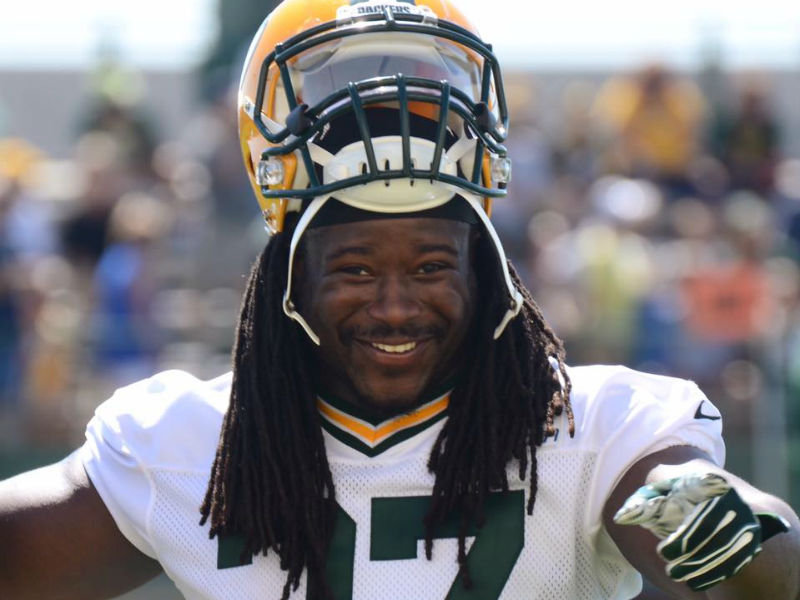GREEN BAY – You might assume that, as professional athletes paid handsome salaries to keep their bodies in peak physical condition in order to play football at the absolute highest level, the Green Bay Packers are always in excellent shape and invariably weigh whatever amount is best for optimal performance.
But if we learned anything from last year’s unending Eddie Lacy Fatgate story and an offseason marked by head coach Mike McCarthy's weight mandate and Aaron Rodgers’ highly publicized diet changes, it’s that such an assumption would be incorrect. Even though their job is to work out, run and eat right, these guys are human, they have their cheat days (or weeks), too, and sometimes they find that a change in exercise, nutrition and poundage is needed to achieve better results on the field.
And, after Rodgers and Lacy had the worst statistical seasons of their respective careers during a 2015 campaign that saw the Packers finish 23rd in the NFL in total offense (their worst output since 1991), outside the league’s top 10 in scoring (for the first time since 2007) and with a 10-6 record that wasn’t good enough to continue their four-year run of NFC North championships, better results were indeed needed.
"Last year was not good enough," McCarthy said Monday in his season-opening news conference. "And the numbers reflected that."
We’ll have to wait and see whether the numbers in the stats are good enough this year, but after the first two days of training camp, it’s clear the numbers on the scales have reflected some positive changes. After weighing in on Monday and practicing Tuesday and Wednesday, the biggest non-injury news in Green Bay’s locker room seemingly was players’ weights and what kind of physical shape they were in.
With the help of professional strength and conditioning coaches, personal chefs and professional nutritionists, players gain and lose pounds often, easily manipulating their muscle mass, body fat and sheer bulk in order to improve their strength or speed or just to better absorb the hits they take in the game. Early in training camp, it’s not unusual for a guy to report in the best shape of his life – as Rodgers apparently did this year – or terribly out of shape, after a lazy offseason like Lacy’s in 2015.
Still, partly because of how high profile those two particular players are and partly because there isn’t much else to talk about, there was an increased focus on the subject early in camp. Many Packers have apparently had significant weight changes, with at least half a dozen speaking openly about it with the media.
Here are seven players who discussed how much they gained or lost, why they did it and what they hoped to accomplish, as well as some relevant quotes.
In the land of beer and cheese, if these Packers can get fit, then so can we!
1. Aaron Rodgers
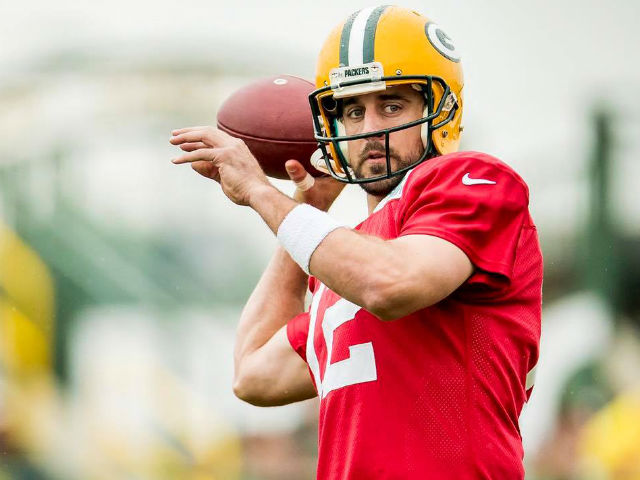
Listed weight last year: 225 pounds
Reported weight now: "218-ish," according to Rodgers in June
Why he changed: The 12th-year veteran said he wanted to get healthier and extend his career by improving his nutrition.
How he did it: Cleaner eating, lots of vegetables and no dairy – "more of a vegan diet with some red meat at times and some chicken," he said. Rodgers also worked on increasing his flexibility and stamina.
Coach’s take: "He's in great shape. I would say this is the best shape I've seen him in." – Mike McCarthy
Teammate’s take: "He’s starting to get a little six pack; he looks great. And obviously, I think that’s going to benefit him on the field" – Randall Cobb
Quote: "I’m as light as I’ve been in a while but my muscle mass is as strong as it’s been when I’ve been 10 pounds heavier. That was the goal, as I get older, was to continue to find ways to get my nutrition and my muscles where I need to be, and I feel good about where I’m at. Conditioning is something that grows throughout camp, but coming in, I’m probably physically in as good shape as I’ve been in a while."
How it can help: Rodgers is a mobile quarterback and one of the best on-the-run passers in the NFL. He’s also a dangerous scrambler, whose 5.0 career yards per carry and 21 rushing touchdowns underscore that dual-threat ability. As light as he’s been since 2007, Rodgers hopes to be quicker on his feet and also reduce inflammation and injury risk through the dietary changes.
2. Eddie Lacy
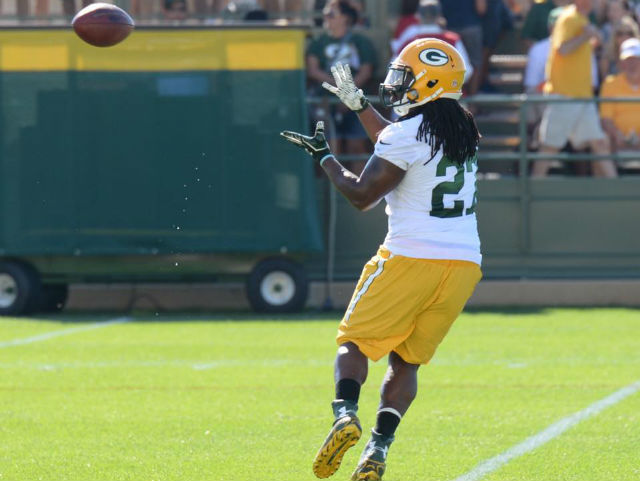
Listed weight last year: 234 pounds, though he was thought to be as much as 25 pounds above that
Reported weight now: Somewhere in the 240s, even after losing 15-18 pounds, according to an ESPN story in April
Why he changed: Following back-to-back 1,100-yard year to start his career, Lacy’s production dropped to 758 rushing yards in 2015. After the season, McCarthy said Lacy "cannot play at the weight he was at (last) year."
How he did it: The vaunted P90X workout program during the offseason – plus basketball and boxing – as well as better eating habits. He said on Tuesday, "I don’t really eat cheese."
Coach’s take: "I’m just going to be frank here: I'm done talking about people's weight. I've never put a guy's individual weight in the media. That's not something I talk about, and in Eddie's particular case, I've talked enough about his weight. … Eddie's ready to go." – Mike McCarthy
Teammate’s take: "Eddie looked good. He’s moving and he even had a nice little lay-out catch. He’s looking good out there, he looks like he feels good, so I’m happy for him." – Davante Adams
Quote: "Do I look like a lost a few pounds over the summer? We can go with that. … (McCarthy’s comment) needed to be said, it was said and you can either take it the right way or the wrong way, and I think I did a pretty good job of taking it positively and going and taking care of what I had to do. … I’m tired of talking about it, I’m pretty sure you all are tired of asking about it, I’m tired of hearing about it everywhere I go. I’m done with that."
How it can help: Last year, Lacy reported to camp out of shape, suffered ankle, groin and rib injuries during the season and was benched twice because of ineffectiveness and violation of team curfew. He’ll always be a big dude, but at a lighter weight, the fourth-year running back will be more agile and elusive. Not to mention faster; his long gain last season was just 29 yards.
3. Josh Sitton
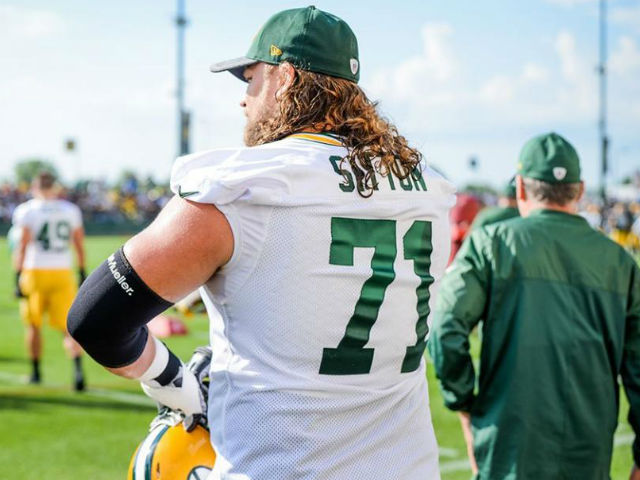
Listed weight last year: 318 pounds, though he said he was up to 325 or 330 after the playoffs
Reported weight now: After saying in May that he’d lost 20 pounds, Sitton is currently around 310, with plans to play between 315 and 320
Why he changed: The 30-year-old, who hasn’t missed a game since 2011 and played all but eight of Green Bay’s offensive snaps last season, said he wanted to reduce pressure on his joints and back as he got older.
How he did it: By simply eating healthier, Sitton lost bad pounds and added better weight.
Coach’s take: "It’s a tribute to him understanding where his body is at in this stage of his career. I think it shows professionalism. The ability in the offseason not to just go and drink a bunch of pops and eat a bunch of cheeseburgers – really, you’re dedicating yourself to your career. He looks terrific." – offensive line coach James Campen to Packers.com
Teammate’s take: "He looks pretty svelte, doesn’t he? He looks great. I’m happy for him. He’s in a contract year, so he came back looking really good. He’s also getting married, so you want to look good in those wedding pictures, too." – quarterback Aaron Rodgers
Quote: "I feel good. I lost some weight this offseason. That helped a lot, got me back feeling good, feel young again, so yeah, I’m happy with where I came into camp. … Hopefully, what I did will help keep me on the practice field more."
How it can help: Even though he didn’t miss a game over the past four seasons, Sitton was a frequent non-participant during the week due to various aches and pains. A free agent after this season, his ninth in the league, the Pro Bowl guard has a vested financial interest in staying healthy and playing well.
4. Richard Rodgers

Listed weight last year: 257 pounds, though he admitted to actually being 270-275
Reported weight now: Around 260 pounds, though he said he wants to get down to 255
Why he changed: Though he did manage to get downfield and catch the famous Hail Mary against Detroit, the lumbering tight end was tied for 97th in the NFL in yards after catch last season (224) and only averaged 8.8 yards per reception.
How he did it: A healthier diet and lots of running, biking and basketball.
Teammate’s take: "I got to see it when we were doing cardio; he has a hoodie on in a hot gym (at the University of California). We’re in there working, putting in the work and it’s hard. With a guy his body type, it’s not always easy to keep his weight down. To put the extra work in like that, it just shows how dedicated he is and how much it means to him." – Davante Adams
Quote: "It’s not a huge difference but it makes a big difference with the timing with Aaron and getting used to it. Being able to run full speed the whole time instead of three or four plays just running full speed. Now I can run full speed every time I run a route."
How it can help: A visibly trimmer Rodgers said being lighter in his third year will allow him to get in and out of his breaks faster, run better routes and more quickly get to dangerous points on the field.
5. Datone Jones

Listed weight last year: 285 pounds
Reported weight now: 270 pounds, and, according to ESPN, he cut his body fat percentage from 25 to 16.5
Why he changed: After three relatively underproductive seasons (8.0 career sacks), the Packers decided to move the former first-round pick from defensive end to outside linebacker – specifically to "elephant" rusher, a role he took on a little more toward the end of last season.
How he did it: Jones reportedly hired a personal chef in order to eat healthier and increased his cardio work to improve speed and quickness off the edge.
Coach’s take: "Datone’s really going to build off what he accomplished last year. … Definitely, he’s earned more opportunities, so just to be productive off of that. To be able to play the 9-technique to 7 to 6 to 5, to go in there and play the 3 in situational defense, it definitely fits his game, and I thought he was very productive doing that in the second half of the season." – Mike McCarthy
Quote: "I'm loving it. A situation happens like this, you can jump in there and boom – you could fill a role and play it. Now, I'm excited because I actually do get a full season to learn coverages, learn how to cover tight ends and running backs. Just rush from different angles." – Jones in June to Packers.com
How it can help: Besides maximizing Jones’ physical abilities, the move – in theory – allows the Packers to reduce veteran Julius Peppers’ snap count. Green Bay doesn’t have a lot of depth on the defensive line, but the team clearly felt Jones’ game fits better at outside linebacker. McCarthy said he "definitely is someone who will play more," and the 2017 free agent will relish more chances to increase his value.
6. Randall Cobb

Listed weight last year: 192 pounds
Reported weight now: 195 pounds at his weigh-in on Monday, though he said he "got up to about 197" during the offseason
Why he changed: By the end of a grueling 2015, Cobb had lost five pounds and was down to 187. He said he got as low as 184 during his recovery from the punctured lung suffered in the NFC Divisional Round playoff game, because he wasn’t able to work out.
How he did it: Hitting the gym and adding muscle mass to his naturally smaller frame.
Quote: "I wanted to put on a little bit more weight, just to hold my strength and stay strong through the whole season, hopefully to keep some nicks and bruises away. If I don’t work out, I lose weight. And a lot of things were going on last year, I couldn’t continue to maintain my strength."
How it can help: Last season, in the absence of Jordy Nelson, Cobb battled double teams and physical defense, resulting in 12 fewer catches and 458 fewer yards than he had in 2014. As the sixth-year receiver said of the importance of playing heavier, "Being able to absorb contact, being able to take the pounding that this league puts on our body, the stress that it puts on our body."
7. Jared Abbrederis
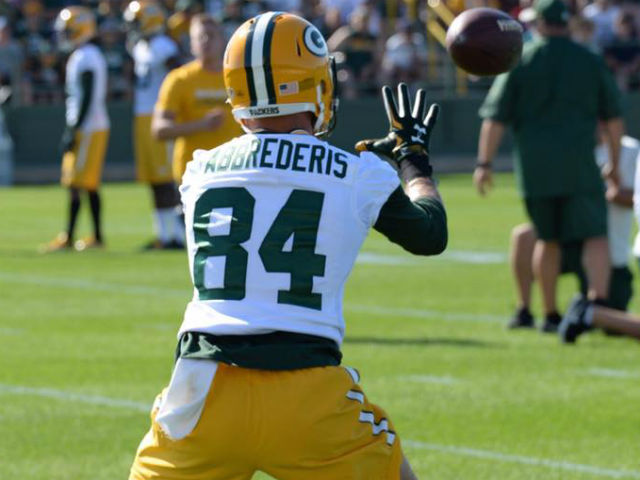
Listed weight last year: 195 pounds
Reported weight now: A little under 200 pounds
Why he changed: The third-year receiver said his offseason goal was to improve his overall strength in order to get better releases from defenders at the line of scrimmage and withstand contact downfield.
How he did it: At 6-1, his lanky frame displaces the added muscle mass more than Cobb’s, but – just as he did after his ACL injury in 2014 – Abbrederis said he spent a ton of time in the Packers’ weight room.
Teammate’s take: "Jared Abbrederis is working his tail off. He’s a great receiver. I think we’re both competing in the slot." – Randall Cobb
Quote: "I don't really need to be a huge guy. It's more about the strength that you have within your frame. That definitely helps when you're at the line, when you can throw guys off or get them running and toss them on the top of the route. It definitely helps. I feel good with that."
How it can help: He said his offseason goal was to improve his overall strength in order to take the hits slot receivers often endure in the middle of the field and avoid issues like the rib injury he suffered last year. Abbrederis’ best skill is his crisp route running, so he needs to get those clean releases at the line to stand out among the Packers’ glut of wideouts.
Born in Milwaukee but a product of Shorewood High School (go ‘Hounds!) and Northwestern University (go ‘Cats!), Jimmy never knew the schoolboy bliss of cheering for a winning football, basketball or baseball team. So he ditched being a fan in order to cover sports professionally - occasionally objectively, always passionately. He's lived in Chicago, New York and Dallas, but now resides again in his beloved Brew City and is an ardent attacker of the notorious Milwaukee Inferiority Complex.
After interning at print publications like Birds and Blooms (official motto: "America's #1 backyard birding and gardening magazine!"), Sports Illustrated (unofficial motto: "Subscribe and save up to 90% off the cover price!") and The Dallas Morning News (a newspaper!), Jimmy worked for web outlets like CBSSports.com, where he was a Packers beat reporter, and FOX Sports Wisconsin, where he managed digital content. He's a proponent and frequent user of em dashes, parenthetical asides, descriptive appositives and, really, anything that makes his sentences longer and more needlessly complex.
Jimmy appreciates references to late '90s Brewers and Bucks players and is the curator of the unofficial John Jaha Hall of Fame. He also enjoys running, biking and soccer, but isn't too annoying about them. He writes about sports - both mainstream and unconventional - and non-sports, including history, music, food, art and even golf (just kidding!), and welcomes reader suggestions for off-the-beaten-path story ideas.

